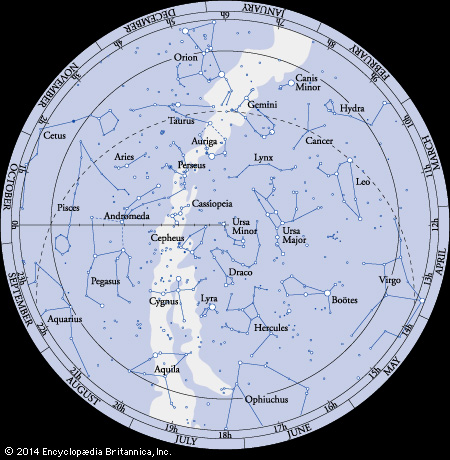You probably know that the cyclic change of seasons on Earth is caused by the planet’s 23.5 degree tilt which allows for the Sun’s light to shine more directly down during Summer. The more direct sunlight is the key to the warmth of these months. Conversely, the Sun’s light shines less directly during the winter months, causing a lack of heat.

In a previous post, we mentioned the sky was in transition from the “winter constellations” to the “summer constellations.” Do you know what causes this shift? Read on to find out.
If you were to mark a star in the sky and watch its night-to-night position over the course of a month, you would notice that it does not stay in the same spot. What you would see is that the star seems to track its way across the sky, from east to west.
All of the stars we see in the night sky are part of the galaxy that our Solar System belongs to: the Milky Way. As the Earth traces out its yearly orbit, the night-side of Earth facing away from the Sun is directed to an ever-changing portion of our galaxy. This means that a constellation or star that you currently see, will have its nightly position changed based on Earth’s orbital position (with the exception of the North Star), and over the course of the year, you will have seen every star visible to your region.
Why doesn’t everyone see every star through the year and why is the North star the exception? Stayed tuned for a future post that will answer these questions.


